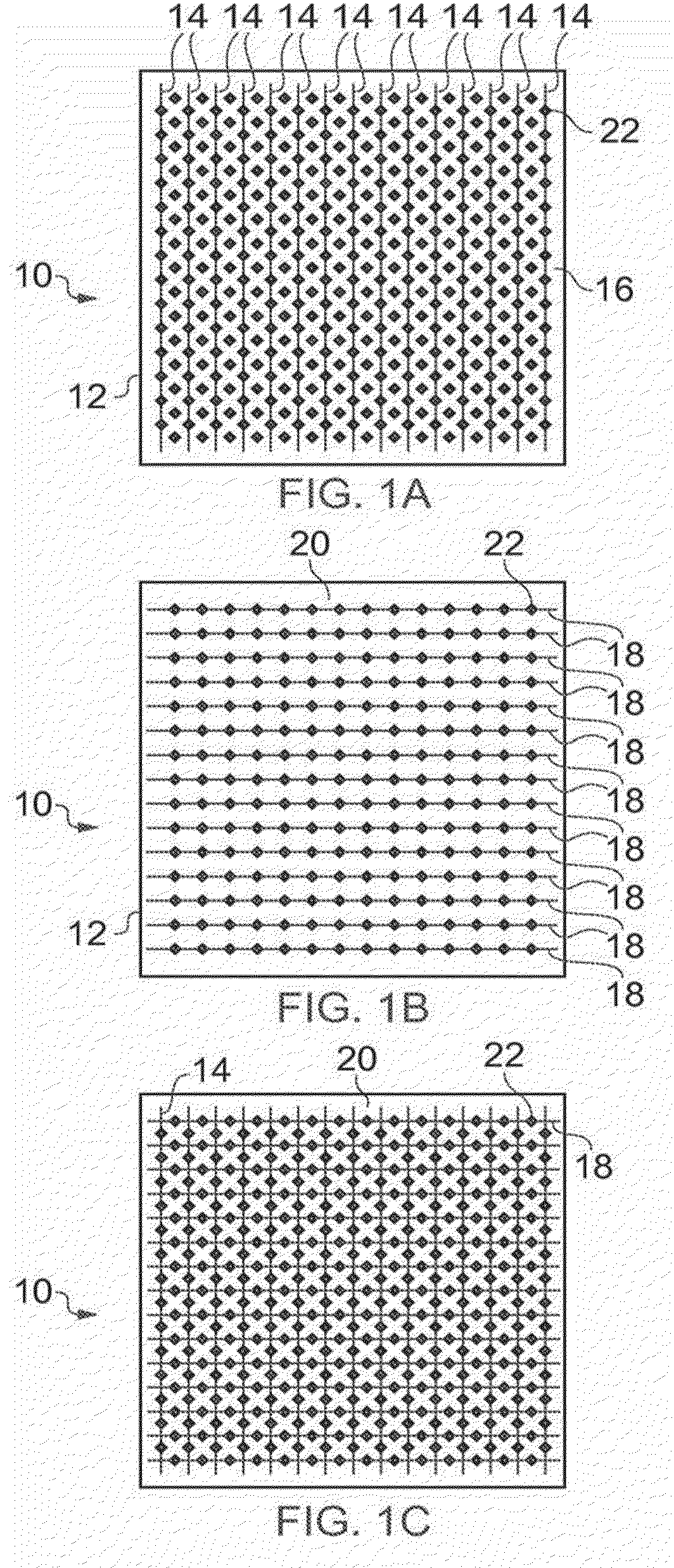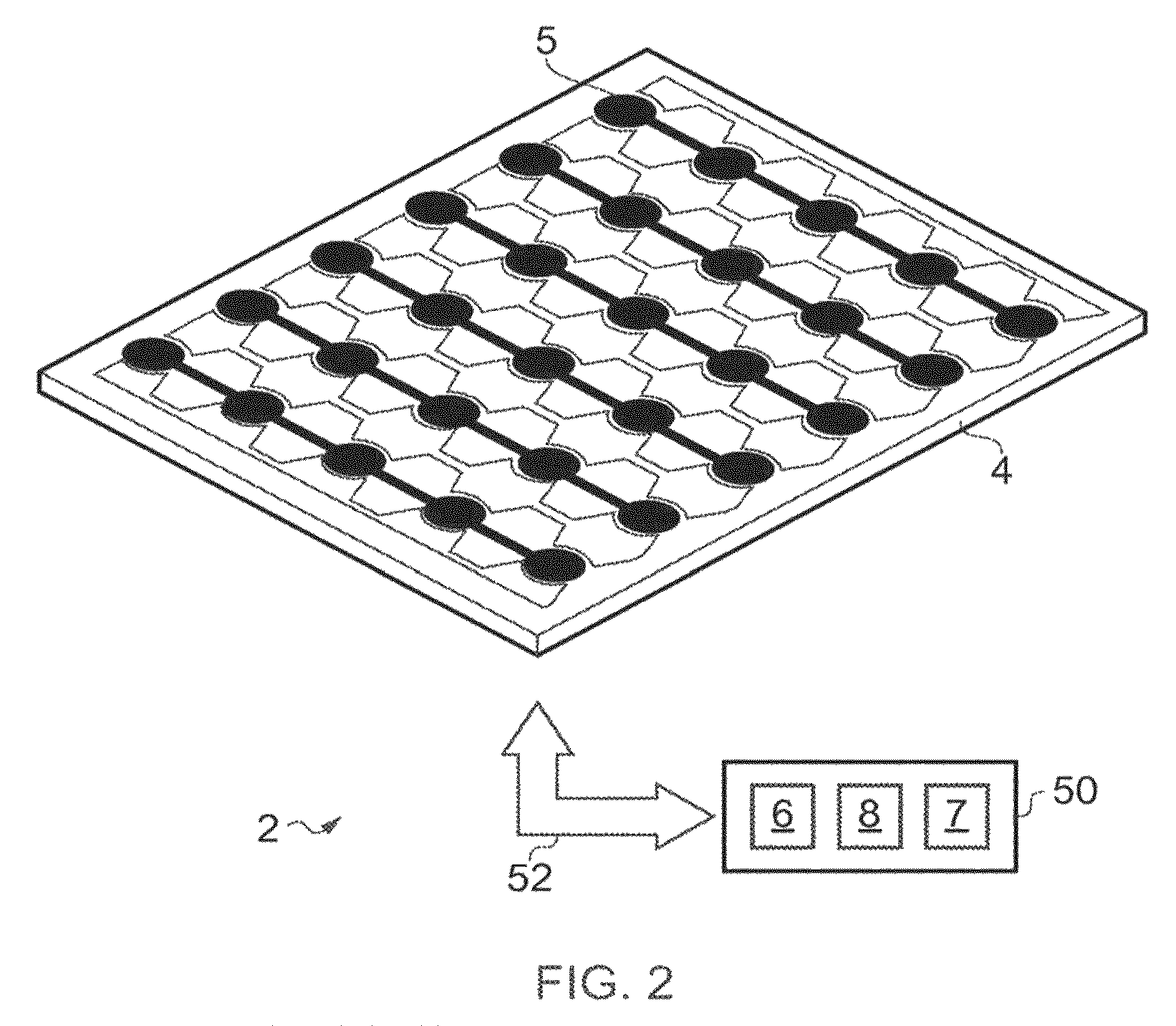Capacitive position sensor
a position sensor and capacitive technology, applied in the field of capacitive position sensors, can solve the problems of limiting the applicability of passive 2dct overlaying the display screen, reducing the sensitivity of the 2dct to any additional coupling, and limiting the effect of applicability
- Summary
- Abstract
- Description
- Claims
- Application Information
AI Technical Summary
Benefits of technology
Problems solved by technology
Method used
Image
Examples
Embodiment Construction
[0047]FIG. 2 is a schematic perspective view showing a position sensor 2 according to an embodiment of the invention. The sensor 2 comprises a substrate 4 bearing an electrode pattern 5 defining a sensitive area of the sensor and a controller 50. The controller is coupled to electrodes within the electrode pattern by a connection 52. In this embodiment the electrode pattern is confined to one side only of the substrate (the upper side for the orientation shown in FIG. 2). In other examples the electrode pattern 5 may be distributed over both sides of the substrate. The electrode pattern 5 in this perspective view is shown highly schematically. A more representative view of the electrode pattern of the sensor of FIG. 2 is shown in FIG. 4, described further below.
[0048]The electrode pattern 5 on the substrate 4 can be provided using conventional techniques (e.g. lithography, deposition, or etch techniques). The substrate 4 in this example is of a transparent plastics material, in this...
PUM
 Login to View More
Login to View More Abstract
Description
Claims
Application Information
 Login to View More
Login to View More - R&D
- Intellectual Property
- Life Sciences
- Materials
- Tech Scout
- Unparalleled Data Quality
- Higher Quality Content
- 60% Fewer Hallucinations
Browse by: Latest US Patents, China's latest patents, Technical Efficacy Thesaurus, Application Domain, Technology Topic, Popular Technical Reports.
© 2025 PatSnap. All rights reserved.Legal|Privacy policy|Modern Slavery Act Transparency Statement|Sitemap|About US| Contact US: help@patsnap.com



